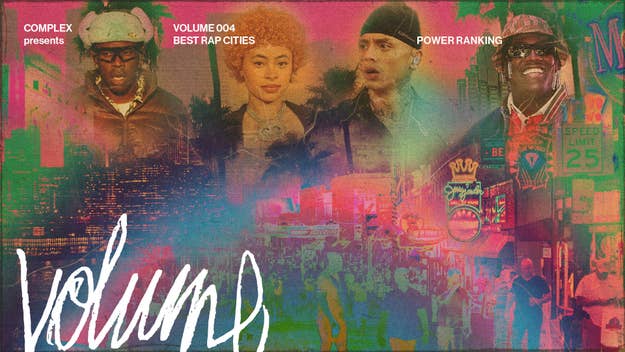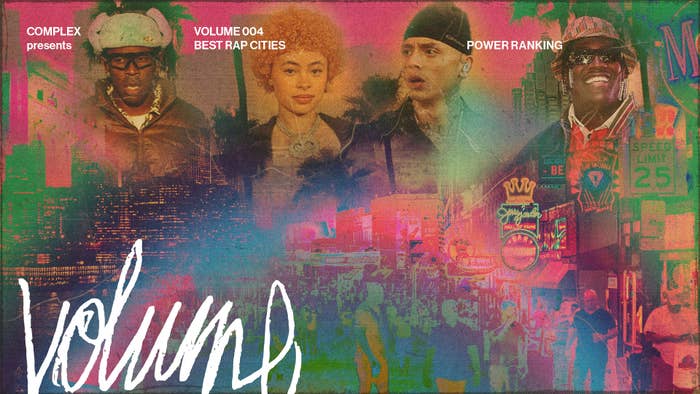
From the inception of hip-hop, the genre has been anchored in community. Birthed in New York 50 years ago, rap was further fortified in Los Angeles, and more recently cascaded to the top in Atlanta whilst expanding well past its homeland’s borders to blossom in cities abroad like London. It’s a genre that has been both quintessentially ours, and of the world; a level playing field that’s really any man or woman’s game.
A rich pool of subgenres—from drill to trap—have since grown from rap’s fertile soil and assured its continued evolution. Rooted in the culture and strength of cities from its onset, rap continues to grow because of the artistry and innovation of the spitters who call these places hom.
Atlanta remained relevant over the last few years, nearly unscathed in its position as rap’s epicenter. But, every year, New York claws itself closer and closer to the top—this year quite literally so, by way of a top-tier crop of women rappers who are not to be ignored. Cities like Chicago, Los Angeles, and Memphis, rally not too far behind as strong forces with breeding grounds for creative and complex expansions of the genre. Meanwhile, Miami, Houston, Detroit and Philadelphia are going through varying levels of exciting reinvention, while London lands a spot as our only international city on the list thanks to their global reach and exciting heavy-hitters on the rise.
For our inaugural rap cities power ranking, we assessed the dominance of the top cities in rap today based on several factors, including impact, measured through the statistics and popularity of their most active and relevant artists, and influence determined by their key players’ effect on the genre and music as a whole beyond their city and state lines.
Below, the Complex Music team and other experts get into why and how each of these home bases is special. Here are the best cities in rap today:
10. Philadelphia
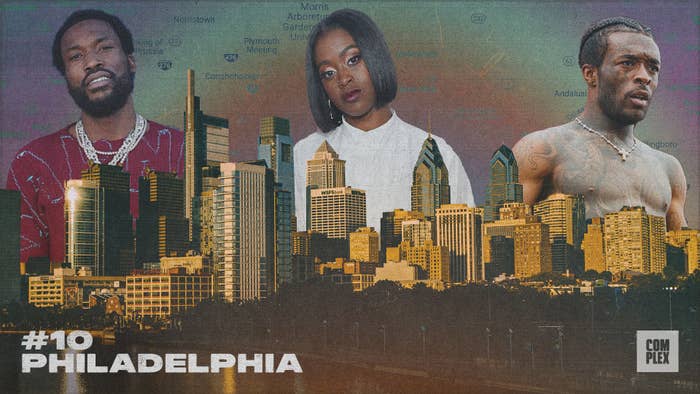
Most dominant artists right now: Lil Uzi Vert, Meek Mill, Tierra Whack, Black Thought
Rising stars: 2Rare, Armani White, Lay Bankz, D-Sturdy, Leaf Ward, SimXSantana
Defining sound(s): Philly Club, Trap
Philadelphia is considerably smaller than its nearby metropolitan city New York (seven times smaller to be exact), but the area has still managed to create motion in rap thanks to its diverse crop of artists with distinct sounds. The city has historically been a pillar of hip-hop, from State Property to DJ Jazzy Jeff & the Fresh Prince, The Roots, Freeway, Eve, Cassidy, and other rap veterans who have helped give Philly its credibility. Philadelphia is also a city of real rappers who pride themselves on lyricism and creativity in flow and bars. Currently, the biggest rappers from Philly are Meek Mill and Lil Uzi Vert, two artists that are geometrically opposed to one another sonically, but both carry Philadelphia grit that resonates through their music. “Dreams and Nightmares” has remained a national anthem of sorts, for over a decade now, and “Just Wanna Rock” helped bring an entirely separate subgenre (Jersey Club) to mainstream attention, with even Beyoncé rocking her hips at her Renaissance tours. Philly’s sound ranges from gritty to punk rap, and other acts like Tierra Whack and 2Rare also represent the fresh and unique talent coming from the city. Philadelphia doesn’t have one unifying sound like some other cities, but as prominent DJ and Philly tastemaker Kill Sing explains, the lack of a mold allows Philly artists to create whatever they want. “When it comes to music, there’s a lot going on in our city, and [artists] are really trying to get out the hood,” she says. “And because we don’t have a distinct sound, any sound can come out of [the city].” As Sing explains, the authenticity that emits from Philly’s talent is because the city wouldn’t have it any other way. “If you can get Philly to support you, you can get the whole world to support you.” —Jordan Rose
9. Detroit
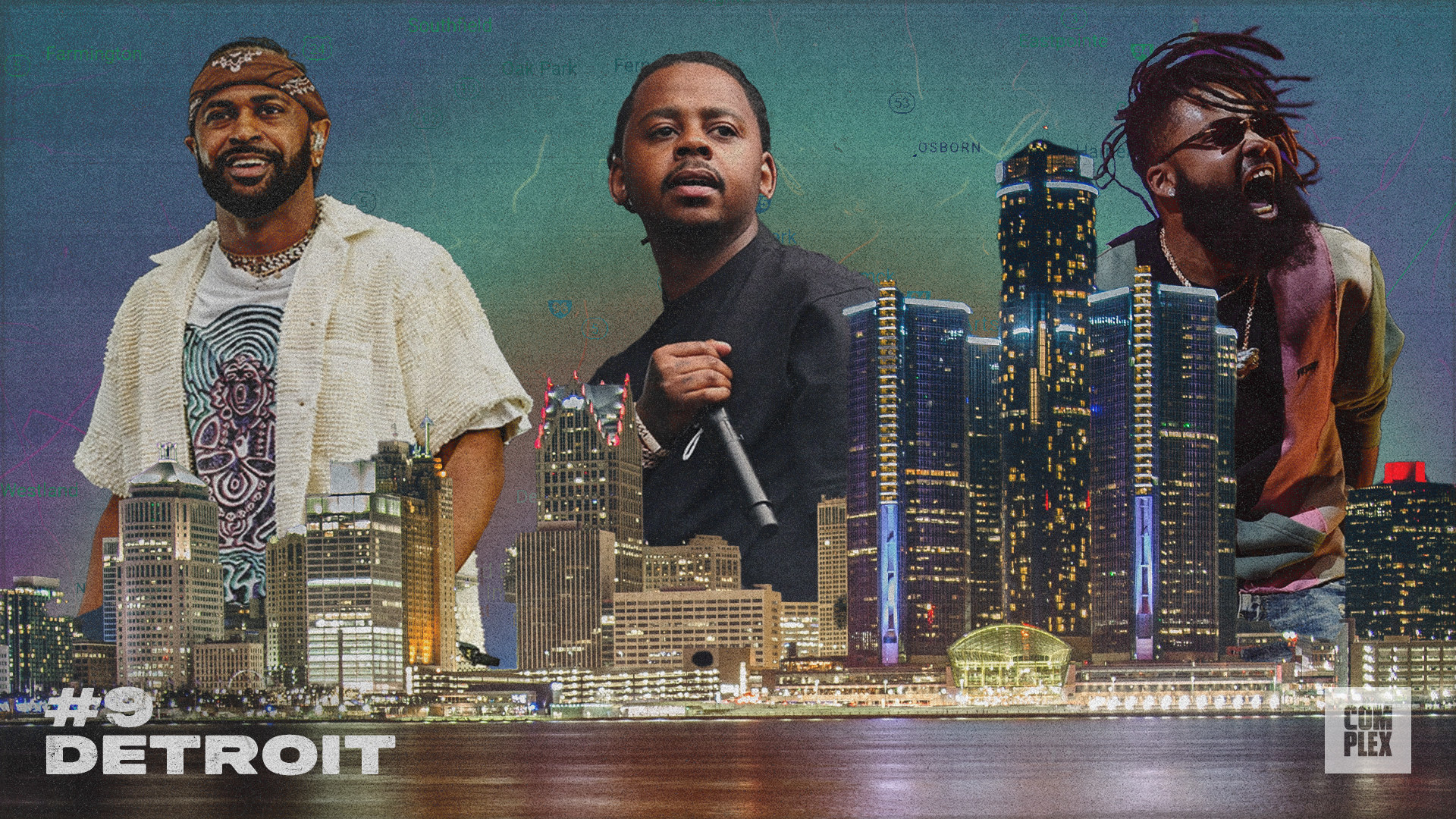
Most dominant artists right now: Eminem, Big Sean, Babyface Ray, Tee Grizzley, 42 Dugg, Peezy, Boldy James, Kash Doll, Royce Da 5’9
Rising stars: Sada Baby, Veeze, Icewear Vezzo, Cash Kidd, Skilla Baby, Baby Smoove, BabyTron, Payroll Giovanni
Defining sound(s): Sped-up beats, brash and boastful lyrics
It’s hard not to factor in Detroit when discussing the most productive and influential cities in hip-hop, both currently and historically. It's home to arguably the biggest commercial rapper of all-time, Eminem, one of the greatest lyricists of his generation, Royce Da 5’9, and one of the biggest stars of the blog era and 2010s: Big Sean. But beyond the household names, a newer wave of Detroit rappers has made an undeniable impact on hip-hop’s landscape since the late 2010s and into the 2020s. Tee Grizzley’s “First Day Out” dominated 2017 and launched him into immediate stardom. Sada Baby broke through impressively in 2018 with “Bloxk Party”, while rappers such as Babyface Ray, Icewear Vezzo, and Peezy have landed at the forefront of Detroit’s new renaissance. There is an argument to be made that at the turn of the decade Detroit has only become more prevalent in hip-hop, evidenced by 42 Dugg’s ascension collaborating with Lil Baby, Tyler, the Creator, Meek Mill, and a host of others before his incarceration, and with Lil Yachty tapping multiple rappers from the city for his Michigan Boy Boat album. Of late, younger acts such as BabyTron and Vezze have begun to forge their success, carrying the torch for the younger generation. Detroit has a rich history in hip-hop, and has maintained its place as a staple over the course of three decades. —Kameron Hay
8. London
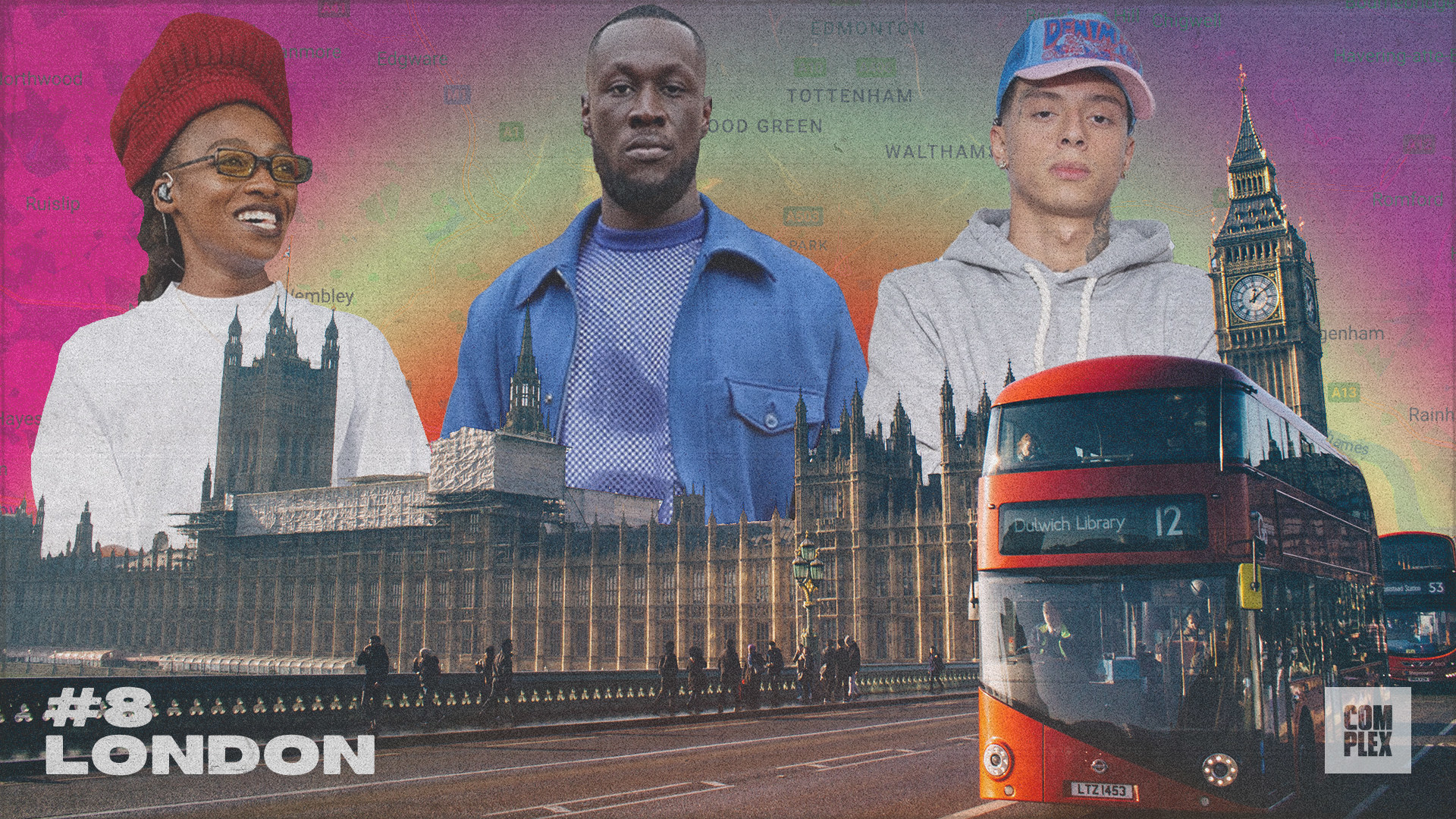
Most dominant artists right now: Central Cee, Dave, Little Simz, Skepta, Stormzy, Digga D, Headie One, J Hus, Knucks
Rising stars: Strandz, Kwengface, Ashbeck, Clavish, Ivorian Doll, M24, PS Hitsquad, V9
Defining sound(s): UK Drill, Road Rap, Chill-Rap
Outside of the US, the British rap scene is arguably the most influential right now. Take drill, for example: After Chief Keef introduced the world to Chicago’s violently dark street rap in the early 2010s, it was UK rap crews like 67 and 150, and producers like Carns Hill, 808 Melo, and M1OnTheBeat who took that and reformulated it into the 808s-laced, grime-licked sound (with the choppy flows to match) that continues to dominate in places like Brooklyn, the Bronx, and even farther out to Ghana, Italy, and Australia.
Last year, West London’s Central Cee kicked through rap’s global door with his pop-drill single, “Doja”—Doja Cat herself unable to deny its pull—reopening the stage that was successfully set by Skepta and grime’s elect back in 2014. And he continues to shake the room, globally, having recently dropped his joint EP, Split Decision, with Santan Dave. While grime and UK rap are considered two separate movements, the former’s ‘resurgence’ in the mid-’10s allowed onlookers to explore similar sounds and scenes that the UK had to offer. This was, of course, helped by Kanye’s now-iconic performance of “All Day” at the 2015 Brit Awards, in which he had everyone from Skepta and Stormzy to Novelist and Jammer—dressed in all black—join him onstage. All eyes were now suddenly on the UK scene at large; however, Drake’s long-standing love for our music and culture has stood the test of time.
While the likes of Diddy (see: the “Hello Good Morning” remix with Skepta) and DJ Whoo Kid (see: mixtapes with Giggs, Tinie Tempah, Skepta) may have dipped into our scene early on, Drizzy has remained a constant champion of all things Black and British—from helping to revive UK crime drama Top Boy to collaborating with Kyla (“One Dance”), Headie One (“Only You Freestyle”), Giggs (“KMT”) and J Hus (“Who Told You”) on timeless cuts—pretty much since 2011, when he came across rappers such as Brixton bad-boy, Sneakbo, who he said inspired him on his album Take Care.
So far in 2023, “road rap” is enjoying another lap round the sun with the likes of Potter Payper and Nines releasing some of the best music of their careers. UK drill remains a dominant force, too, with acts like Kwengface and PS Hitsquad pushing it into new spaces sonically, from the beats they choose to lace to switching up the drill flow format. The UK’s “chill-rap” scene, however—initially ushered through by now-defunct crews Piff Gang and Hawk House, and stars such as Kojey Radical and Little Simz, who are more melodic than most in their approach—has everyone excited for what’s to come. Tap in. —Joseph ‘JP’ Patterson
7. Houston
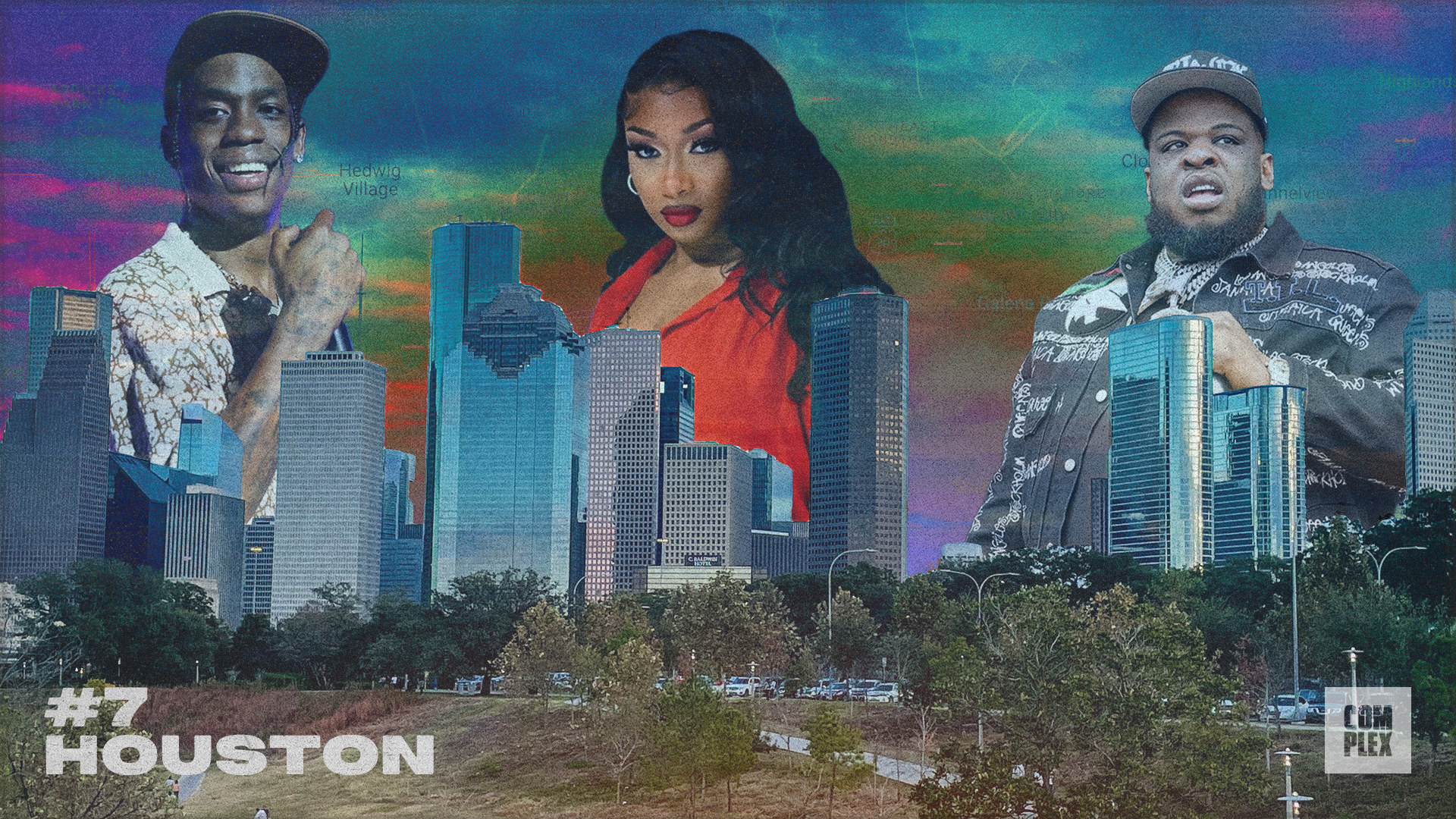
Most dominant artists right now: Megan Thee Stallion, Travis Scott, Don Toliver, Maxo Kream
Rising stars – Monaleo, KenTheMan, Sauce Walka, DeeBaby, Propain, Lil Jairmy
Defining sound(s): Chopped & Screwed, Trap, Melodic Rap
There were plenty of years when Houston wasn’t on anybody’s rap radar—even after Geto Boys went from local heroes on James Prince’s Rap-A-Lot Records to platinum status in 1992.
Houston’s breed of rap is known for the slowed down sounds of DJ Screw and Swishahouse, but the roots for that began a generation before. Inspired by J Prince’s blueprint and DJ Screw’s cassette empire, networks of artists and labels developed in Houston’s underground throughout the ’90s, but that home-focused trajectory evolved in 2005 when a slew of young voices (Slim Thug, Paul Wall, Chamillionaire, Mike Jones) went mainstream and brought attention to the city as a whole.
Some artists capitalized by signing major deals, but the basic independent-leaning infrastructure (or lack thereof) prevailed over time, and multi-generational fanbases continue to support the city’s numerous scenes—like the East Coast/Southern funk fusion of Rap-A-Lot, the hard-hitting street sounds of South Park Coalition, and standalone artists that range from gangsta rap to pop, gospel, and underground like Street Military, South Park Mexican, Lil’ Troy, K-Otix, and Tobe Nwigwe—changing perceptions of the city’s place in the national rap landscape and influencing artists like Drake, ASAP Rocky, and legions of DJs. Houston is both isolated and a cultural center, welcoming transplants (DJ Screw, UGK, Devin the Dude, Normani) and celebrating its legends (Scarface, Z-Ro, Lil’ Keke) as new generations of talent are plucked from the ether (Travis Scott, Lizzo, Megan Thee Stallion) and fresh local voices continue to emerge (Don Toliver, Propain, Monaleo), constantly reinventing what it means to be a Houston artist in a city known for taking it slow. —Lance Scott Walker
6. Miami
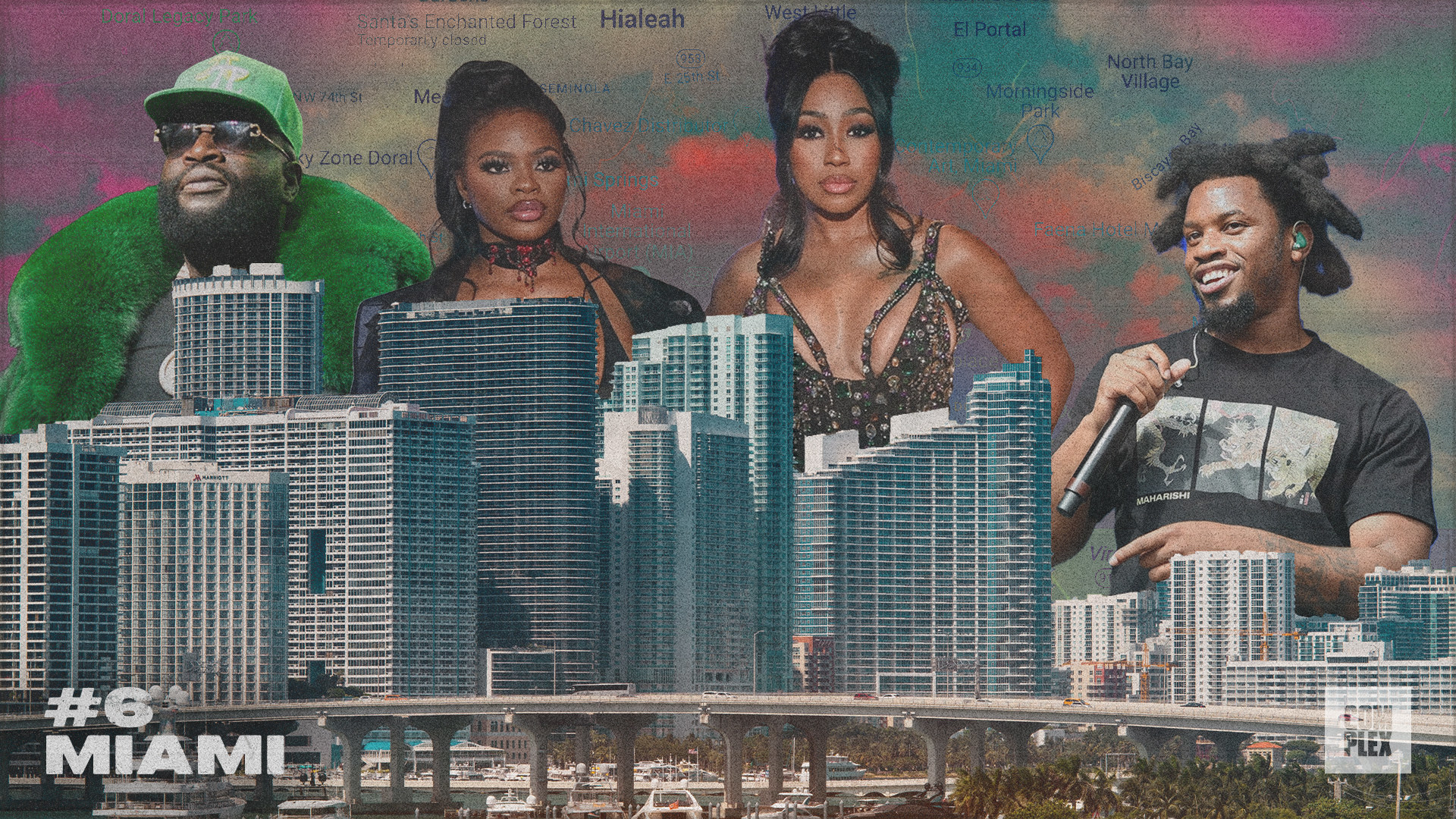
Most dominant artists right now: Rick Ross, City Girls, Kodak Black, Denzel Curry, Ski Mask the Slump God
Rising stars – Trapland Pat, Mellow Rackz
Defining sound(s) – Melodic Rap, Pussy Rap, Trap, Latin Trap
What truly sets Miami apart from other dominant rap cities is its sonic diversity, often blending rap sounds with vibrant Caribbean influences. A prime example of this fusion is Kodak Black's chart-topping hit "Zeze" featuring Travis Scott, which effortlessly merges Kodak's rap influences with his Haitian background. Similarly, prominent artists like Lil Pump and Ski Mask the Slump God, who rose to prominence during the SoundCloud era, skillfully incorporated elements from Latin and Caribbean music into their distinct styles. While paying homage to their predecessors, artists like Kodak Black have added their own grit and menacing energy, forging a path for other like-minded artists to emerge.
Miami rap is equally defined by its unbridled expressive energy, as previously demonstrated by veterans like 2 Live Crew and Trina. Presently, City Girls lead the charge with sexually charged and empowering tracks that align perfectly with the rise of the “pussy rap” subgenre, which is gaining popularity among women entertainers. City Girls have also set the bar with their catchy slogans and slang terms, such as "Period," which have resonated worldwide. On the other hand, Rod Wave has amassed millions of supporters on platforms like YouTube and streaming services, thanks to his emotionally charged and vulnerable music that vividly explores heartbreak and the gritty realities of Miami's street life.
Tony M. Centeno, Hip-Hop Editor for iHeartRadio and a local culture expert, acknowledges Miami's evolution as an influential force in the rap scene, stating, “Miami wasn’t always the go-to city for hip-hop, but over the past three decades or so the city has grown into an influential force.” Centeno also notes that Miami has become a playground for pivotal events and cultural moments. “I’ve witnessed plenty of incredible moments from Kodak Black’s first concert following his incarceration in 2017 to Rolling Loud go from a two-day event in Wynwood to a three-day weekend at Hard Rock Stadium in just eight years,” he recalls. “With Miami being home of the biggest hip-hop festival in the country and every rap fan’s favorite podcast ‘Drink Champs,’ there’s no way Miami can be left out of the conversation going forward.” —Jessica McKinney
5. Memphis
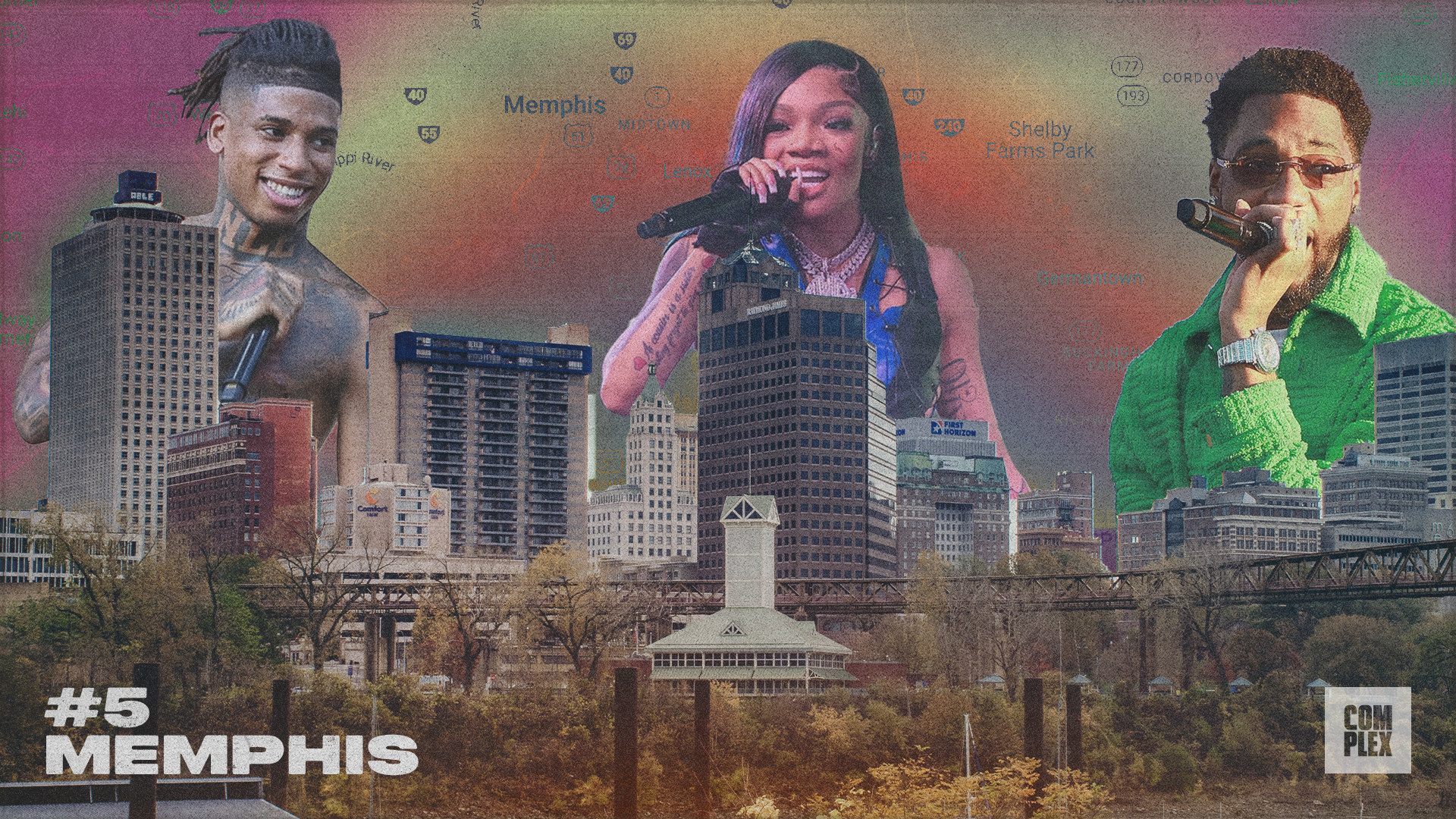
Most dominant artists right now: GloRilla, Yo Gotti, Moneybagg Yo, Key Glock, NLE Choppa, Blac Youngsta
Rising stars: Finesse 2 Tymes, Big Scarr, BIG30, Duke Deuce, Kenny Muney, Big Boogie, Gloss Up, Slimeroni, K Carbon
Defining sound(s): Trap, Buck, Proto-Crunk, Horrorcore
The Memphis rap scene is a self-sustaining machine, dutifully preserving its roots while maintaining an up-to-date polish. In the last two years alone, the city lost Dolph, Gangsta Boo, and Pooh Shiesty (to incarceration), but their peers and proteges will happily pick up the torch. GloRilla stole last summer with the show-stopping “FNF,” while Finesse2tymes hit the ground running after a lengthy prison sentence with his long-awaited release, the trunk-rattling 90 Days. The city always has a handful of rising stars (Big30, Gloss Up, Big Boogie), one viral hit away from the national spotlight.
The most admirable aspect of Memphis rap in 2023 is how little it’s strayed from Memphis rap in 2003. The horror scores and tranced-out loops Three Six Mafia perfected are no longer the dominant local sound. However it has been cross-pollinating throughout the country for the last 20 years. What once was an isolated nation-state in Atlanta’s shadow is now an undeniable cultural hub.
Producers like Tay Keith are in the room with everyone from Beyoncé to Eminem, but still breaking newcomers like Sexyy Red with the thumping summer anthem “Pound Town.” The scene’s forefathers like Drumma Boy can now branch out into lush afropop stylings with surging international stars like Dexta Daps. And while Metro Boomin is from St. Louis, Missouri, the producer, who Marvel recently tapped to score its billion-dollar animated Spider-Man, has never been shy about being a Juicy J and Drumma Boy disciple.
Locally? Memphis stuck to the script and still managed to keep it current. The city never gave up on the posse cut. Some 30+ years later, the local dance culture has gone global thanks to dancers Lil Buck and Draemt4w, as well as rapper Duke Deuce, who brings Memphis jookin to every live show. That classic, back-and-forth gender war double feature song format Gangsta Boo and La Chat did so well in the ‘90s? Last summer Hitkidd, Duke and GloRilla ensured that In Memphis, it lives on.
As long as drum machines, microphones, and subwoofers exist, Memphis will remain a pillar of rap, and Black music on the whole. In the face of forced collaborations and blurred cultural lines, the city continues to shape the mainstream around its own edges. —Torry Threadcraft
4. Los Angeles
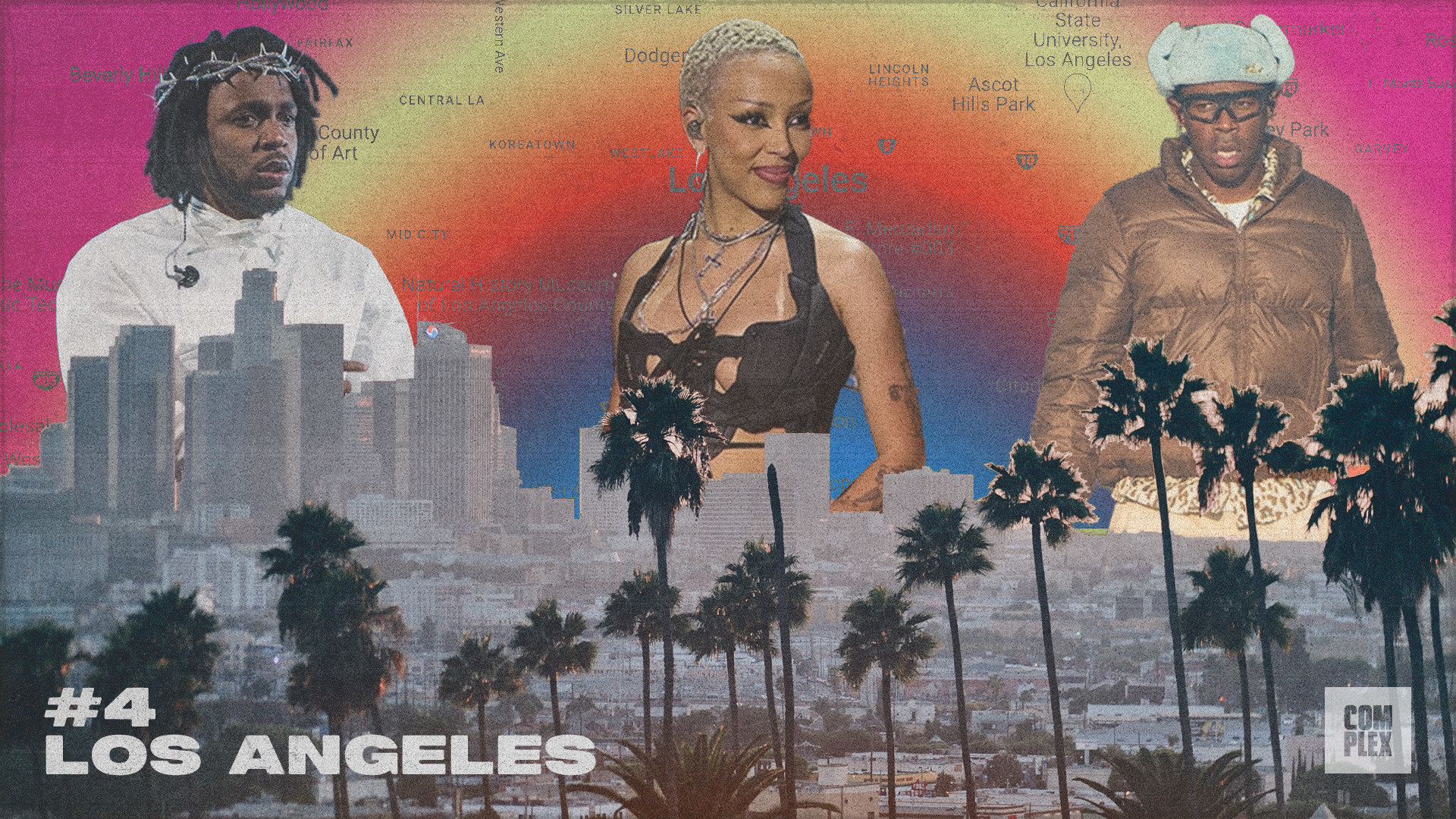
Most dominant artists right now: Kendrick Lamar, Tyler, the Creator, Roddy Ricch, Vince Staples, Doja Cat
Rising stars: Blxst, 03 Greedo, G Perico, Ohgeesy, Remble, Buddy, ASM Bopster, Saviii 3rd, R3 Da Chilliman, Wallie the Sensei, Big Sad 1900, Baby Stone Gorillas, Ralfy The Plug, Tr3yway6k
Defining sound(s): Neo G Funk, Gangsta Rap, Minimalist Menace, Crooning pain rap
Los Angeles has historically been known as the cradle of gangsta rap. Black people in LA have historically been subjugated by governmental neglect, police brutality, and legalized segregation, and there’s a musical lineage in response tracing from the Watts Prophets in the ’60s to gangsta rap in the ’80s and '90s to the sound of LA rap today. The gangsta rap of the '80s and '90s birthed an entire movement that spread across the country, and some of the most well-known rappers from that era, like Snoop Dogg and Ice Cube, became household names.
Today, there exist many factions of LA rap—from a few commercially dominant players who have penetrated internationally, to a vibrant, bubbling scene with a large cadre of artists putting their own unique spins on neo-gangsta rap.
Kendrick Lamar, the wunderkind from Compton, still reigns king, and his latest album took us on a deep tour of his subconscious with some subtle nods to the new wave of LA street rap (mud-walking like Drakeo The Ruler). Tyler, the Creator, repping for the LA skater teens, cycled through ideas and landed in his Gangsta Grillz era this year with some massive hits from the deluxe version of his DJ Drama hosted mixtape. Roddy Ricch continues to see commercial success by processing pain rap and luxurious LA lifestyles through a pop-leaning lens. And even pop star Doja Cat, who cut her teeth in the LA underground freestyle scene, has one of the most anticipated rap albums coming out this year.
But the overarching sound inside the city comes with an explosion of creativity from the street rap lineage, where artists are ripping a mix of menacing, funny, and deeply heartbreaking raps over minimalist beats. This year has seen the rise of the Baby Stone Gorillas from the Jungles neighborhood, making shoot-'em-up bangers with twisted flows and hyper-local references. The momentum of South Central’s G Perico, one of the best street storytellers alive, crested this year with his own (also Drama-assisted) Gangsta Grillz mixtape. Big Sad 1900, repping West LA, put an emotional spin on the sound. And Watts legend, 03 Greedo, who makes “emo music for gangbangers” returned home from prison to a coronation.
Then there’s guys like Ralfy The Plug and R3 Da Chilliman carrying the torch for the late Drakeo The Ruler’s violently dismissive subgenre of LA rap he calls “nervous music.” And crooners like Wallie the Sensei and Saviii 3rd, giving hooks and solemn, but singable street anthems to the city.
The city’s rap scene is varied and complex, and though there are a few mainstays on popular playlists, the collective sound of the LA is concentrated around the sparse, but sinister beats from producers like Low The Great and RonRonDoThatShit. They leave tons of space for street rappers to play with their flows and the resulting alchemy breathes new life into the historical tradition of gangsta rap. But that new collective sound has yet to fully seep into mainstream consciousness like a few other cities whose styles have become the standard-bearers. —Harley Geffner
3. Chicago
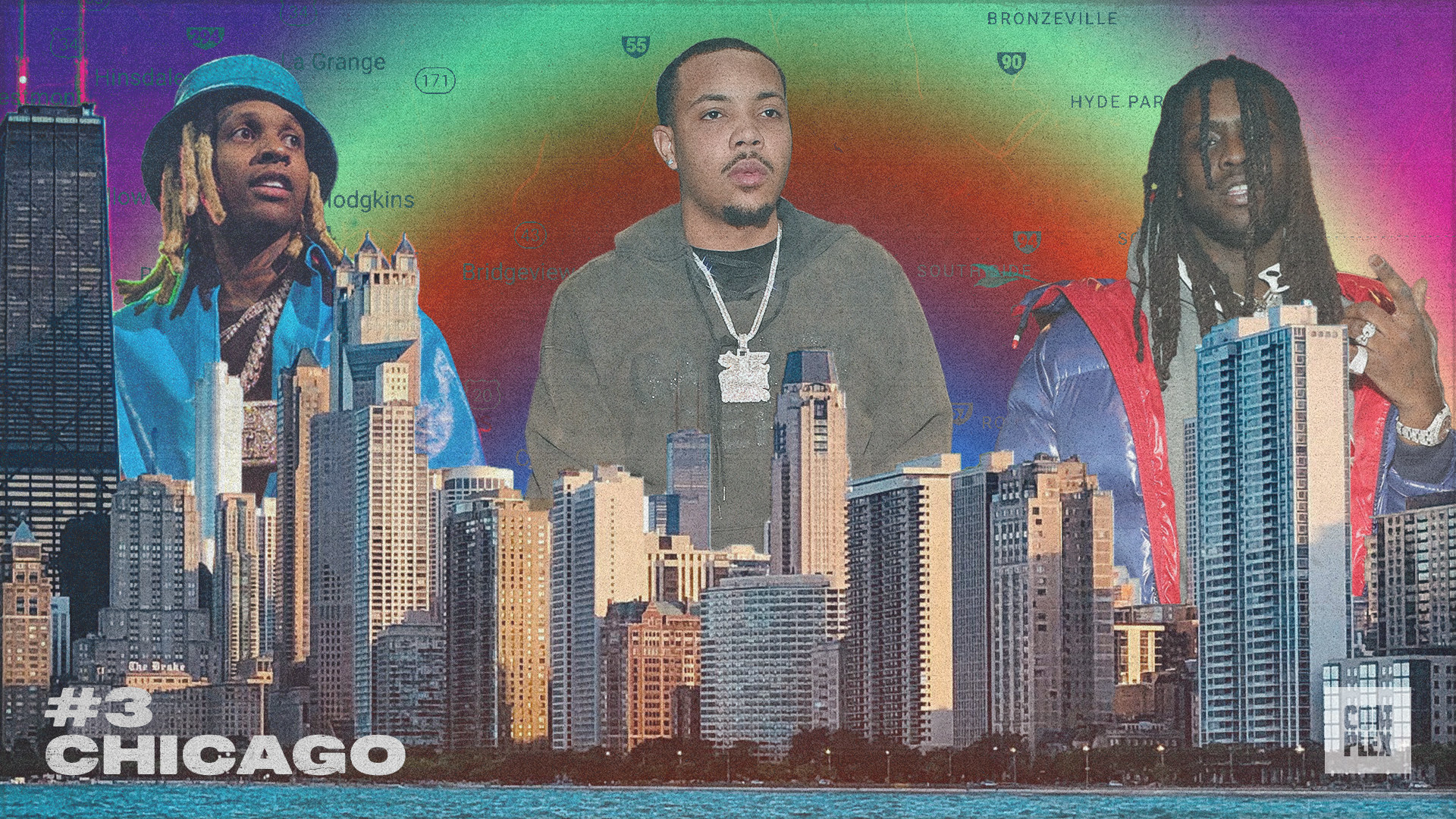
Most dominant artists right now: Lil Durk, G Herbo, Chief Keef, Polo G, Kanye West
Rising stars: Lil Zay Osama, PGF Nuk, Lucki, Mello Buckzz, Tay Savage, Kashh Mir, DCG Brothers, Munna Ikee, Korporate, Chief Wuk, Prince Dre
Defining sounds: Drill, Melodic Rap, Juke/Footwork
Chicago rap fans are likely witnessing the start of a new era. Not only is Chicago drill still alive and well, but the movement has also held up due to women artists like Mello Buckzz, Amari Blaze, Moni Da G, and Kashh Mir. Their collaborative hit “Mouskatool (Boom)” hit the streets with a bang, serving as an example of drill music’s continued relevance with a remix, featuring Latto, that brought more eyes to Chicago women’s drill movement. Coming off a successful 2022, Lil Durk has become one of hip-hop’s biggest stars, earning a sixth top 10 album with Almost Healed. And his mission is clear; “All My Life” featuring J. Cole shows the Chicago drill legend in a new light, reflecting his desire to better his city for the youth. G Herbo, another drill legend, released his Strictly 4 My Fans 2 mixtape this year, which has a feature from Mello Buckzz, filling some time before his next album. Herbo’s tape embraced a drill sound, feeding core drill rap fans’ continued love for the subgenre. Rap fans are anticipating major album releases this year from Polo G, Chief Keef, and G Herbo, as well as posthumous releases from King Von and Juice WRLD. Juice WRLD in particular helped pioneer Chicago’s melodic rap era during the late 2010s before his untimely death.
We can't talk about the dominance of Chicago without mentioning Kanye West, one of rap's biggest stars and innovators whose influence on culture is immense. West emerged working closely with Chicago artists like Common, Twista, and Lupe Fiasco, helping raise the profile of the city in a major way. The conscious rap era helped open the doors for alternative rap artists like Saba, Noname, and Chance the Rapper, whose new project is highly anticipated this year.
The era of socially conscious rap faded out and Chief Keef ushered in the drill era which has dominated the Chicago rap scene for a decade. After the deaths of artists like King Von and FBG Duck, along with other rising drill artists like Young Pappy and L’A Capone, fans were left questioning if Chicago’s recent musical impact on hip-hop had staying power. 2023 has shown that Chicago hip-hop is still a leading force. — Nicholas Andre of The Chicago Wave
2. New York City
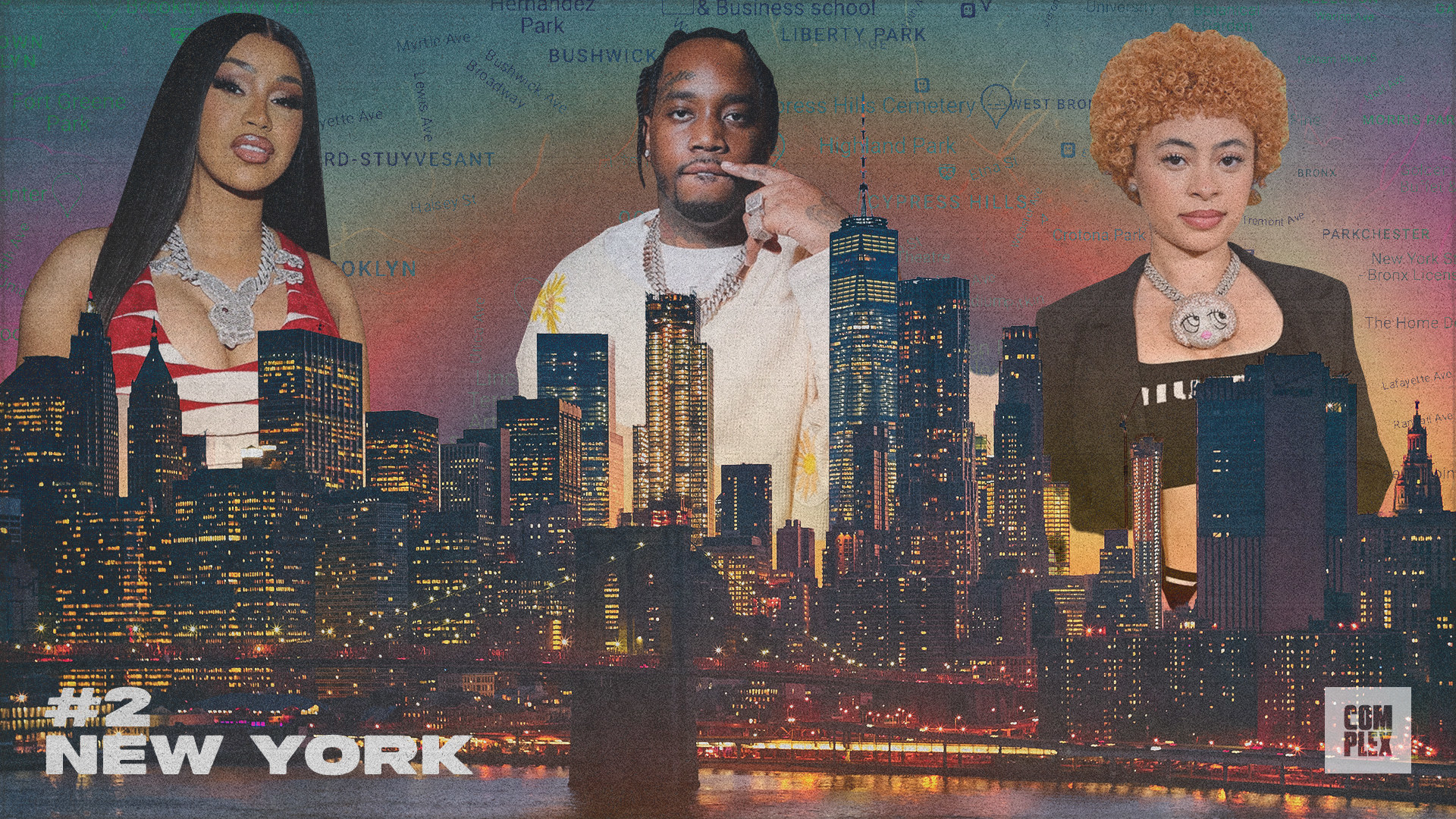
Most dominant artists right now: Ice Spice, Cardi B, Nicki Minaj, Jay-Z, Nas, ASAP Rocky, Fivio Foreign, Lil Tjay, A Boogie Wit Da Hoodie
Rising stars: DD Osama, Lola Brooke, Sheff G, Maiya The Don, Kenzo B, Scar Lip, Cash Cobain, Chow Lee, Shawny Binladen, Kay Flock, Bizzy Banks
Defining sound(s): Drill, Melodic Rap
New York City is the birthplace of hip-hop, and like the 50-year-old genre, the scene continues to evolve. From the Sugarhill Gang and the first hip-hop song in “Rapper’s Delight” to the Shiny Suit era to the immersion of New York drill with Pop Smoke, Sheff G, and others, historically, New York rap has permeated the rest of hip-hop. It's where artists like Diddy, Bad Boy, Mase, Jay-Z, Nas, and 50 Cent helped street rap become more commercial. There’s just something different about this city. The natural New Yorker grit carries through the music, establishing a history of success that makes artists from other cities want to emulate the careers of Hov, B.I.G., and Nas. From the start of hip-hop, the city has remained dominant because it finds a way to evolve and fit every new iteration of the genre, giving it tremendous staying power.
New York is one of the most powerful rap cities right now because its artists and trends have the unique ability to extend beyond hip-hop and take over pop culture. This is apparent in Ice Spice’s rapid ascension to superstardom, with her Bronx-centric vocabulary and punchlines introducing the world to “munch”; it’s a rise reminiscent of fellow Bronx rapper Cardi B in 2018, and prior to that Nicki Minaj in 2010. The city has lost some of its footing as the most dominant sound over the years due to the rise of Southern artists like Lil Wayne, Future, T.I., Jeezy, and others. But, after trap dominated the scene for over a decade, drill music has emerged as a commanding sound, too—and New York (directly inspired by UK drill, which was influenced by the Chicago drill movement) is leading the way, in large part thanks to artists like Ice Spice and Fivio Foreign.
Spice has controlled the city over the last year, with cross-genre collaborations with Taylor Swift and PinkPantheress and her viral EP Like..?, but other mainstays like ASAP Rocky, Lil Tjay, Fivio Foreign, and A Boogie Wit Da Hoodie have helped maintain the city's relevance. The industry also still stops and takes notice whenever legends like Nas or Jay-Z release a new verse or album—and when Nas took over Madison Square Garden or when The Lox had their iconic Verzus battle against Dipset. This speaks to the longevity of New York acts and the way in which legacy artists like Jadakiss, Diddy, Cam’ron, and others have been able to carry their career into an entirely new generation and still be culturally relevant two decades later. The sound of the city today is also being led by women, with acts like Lola Brooke, Maiya The Don, Scar Lip, and Kenzo B spearheading the new class of New York artists. And despite being marred by violence and police targeting, the rising crop of artists born from the drill movement like Cash Cobain, Chow Lee, DD Osama, and countless others are carrying the torch Pop Smoke left; embodying the New York mentality of moving forward, against all odds. —Jordan Rose
1. Atlanta
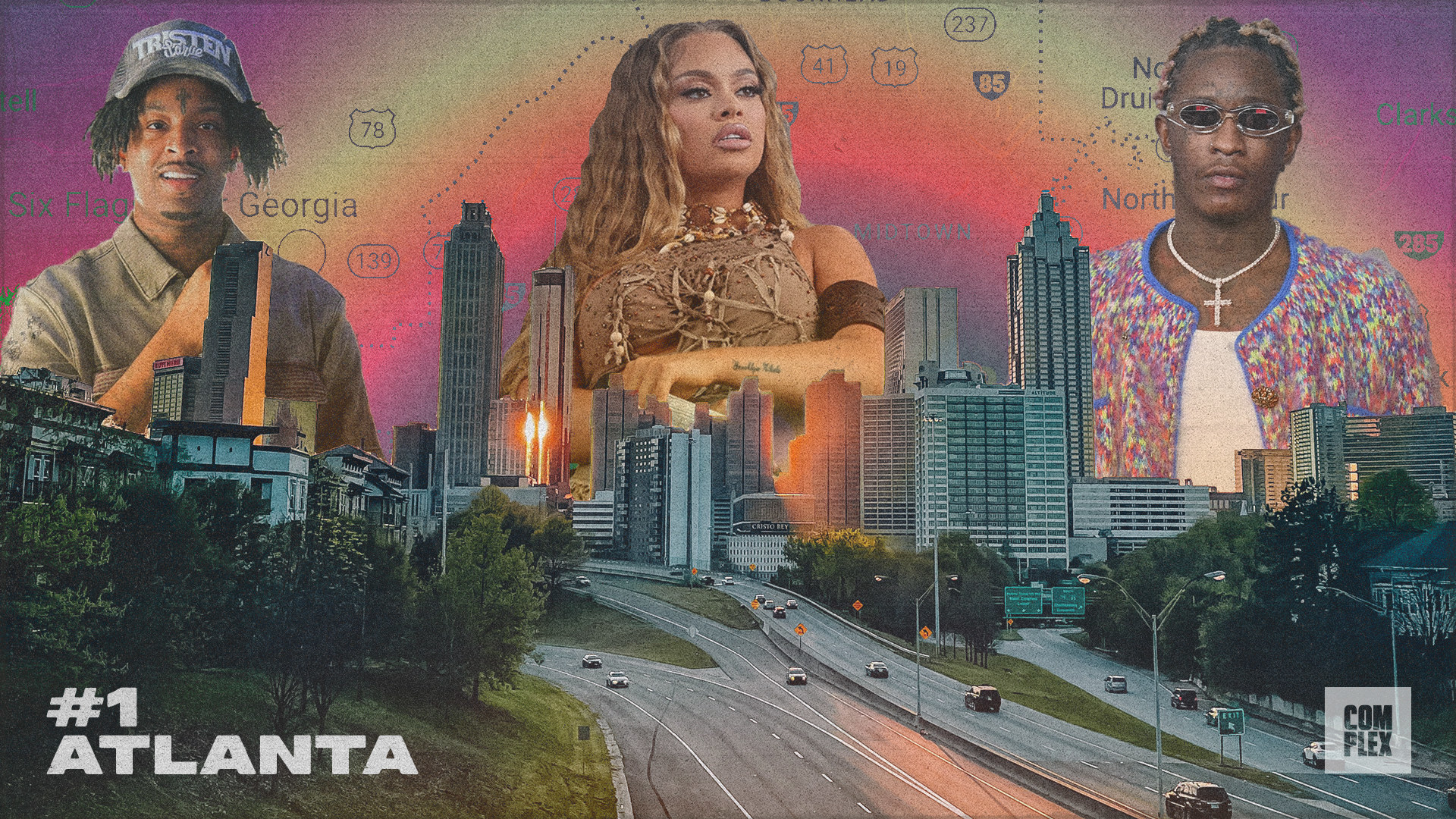
Most dominant artists right now: Future, Young Thug, Lil Baby, Latto, 21 Savage, Quavo, Offset, Gunna, Playboi Carti, Gucci Mane, Lil Yachty, JID, Young Nudy
Rising stars: Hunxho, Destroy Lonely, Ken Carson, Kenny Mason, Kali, SoFaygo, Bktherula, BabyDrill, Lil Gotit, Baby Tate, Lakeyah
Defining sound(s): Trap, Melodic Rap
The story of rap music in Atlanta has somehow made Andre 3000’s iconic Source Awards speech from 1995 feel like an understatement. The South—specifically Atlanta—didn’t just have something to say; it had a lot to say. What then felt like a bold assertion for a Southern group to make in the midst of the East Coast and West Coast’s ongoing battle for dominance, has now been proven repeatedly.
From the start, the city’s been a diverse hotbed for both mainstream and underground acts. In the ‘90s, there was the rise of the Dungeon Family with Outkast and Goodie Mob’s soulful, unapologetic tales of Black life in the South, but also Freaknik and club-approved anthems from So So Def’s Jermaine Dupri and A&R-turned-crunk-master Lil Jon. In the 2000s, Ludacris’ brazen raps graced the airwaves, but so did Soulja Boy and so-called “snap” rappers D4L and Dem Franchize Boyz, along with trap gods T.I., Gucci Mane and Jeezy. By the 2010s, artists such as Future, Migos, and Young Thug had effectively taken over, commercializing the city’s rap influence more than ever. Thanks to rappers like 2 Chainz, the trap now extended beyond the bando and into yoga classes. The subgenre officially got an entire museum dedicated to its influence, too. And, for every mainstream hit record Atlanta has had along the way, artists such as Kilo Ali, Rich Kidz, and Bankroll Fresh have made classic rap songs that have inspired rappers throughout the country and beyond. Notably, Drake’s obsession with borrowing from the styles of Atlanta rappers resulted in collaborations with artists such as Migos and Makonnen, all the way to Her Loss, his 2022 album with 21 Savage.
Atlanta’s reign remains as strong today as it was in previous rap eras, even as cities such as New York, Los Angeles, Chicago, and Memphis have recently gained increasing relevance. In the past year alone, the city has produced no. 1 albums including Gunna’s DS4Ever and Lil Baby’s It’s Only Me. Notably, this year Latto garnered a Best New Artist Grammy nomination, her success a welcomed reprieve in the city’s male-dominated rap history. Despite the highs, Atlanta spent much of 2022 in a state of mourning, with Young Thug, Gunna, and many of the YSL rap collective’s most promising artists arrested on racketeering charges, followed by the death of rappers Lil Keed and Takeoff. (Gunna was released nearly six months ago, but Young Thug remains incarcerated with the trial now six months into jury selection. Both artists released highly anticipated albums in June.)
The losses over the past 12 months have felt immeasurable, but the city’s knack for reinvention has remained. Recently, a number of local artists have continued to assist with the deconstruction and reimagining of the city’s trap subgenre to incorporate elements of soul, drill, and more. Playboi Carti and his protege Destroy Lonely have continued to offer horror-themed stories of fashion and excess. Showcasing the diversity of East Atlanta rap, JID has managed to achieve crossover appeal thanks to his focus on lyricism and his gift for storytelling, while the prolific Young Nudy kept fans fed this year on versatile, culinary-themed tales. Nudy’s affiliate BabyDrill offers sinister rhymes that manage to pull from the various drill scenes throughout the country, while also feeling hyperlocal and rich in the legacy of Atlanta trap. QC’s Lil Yachty steered furthest from the city’s trap legacy with his 2022 album Let’s Start Here, experimenting with a psychedelic-rock album that largely obscured his title as a rapper. From the viral rap star Kali, to the poetic Kenny Mason, Atlanta still has a lot to say, and it maintains a captive audience hanging on to every word. —Jewel Wicker
SHARE THIS STORY
